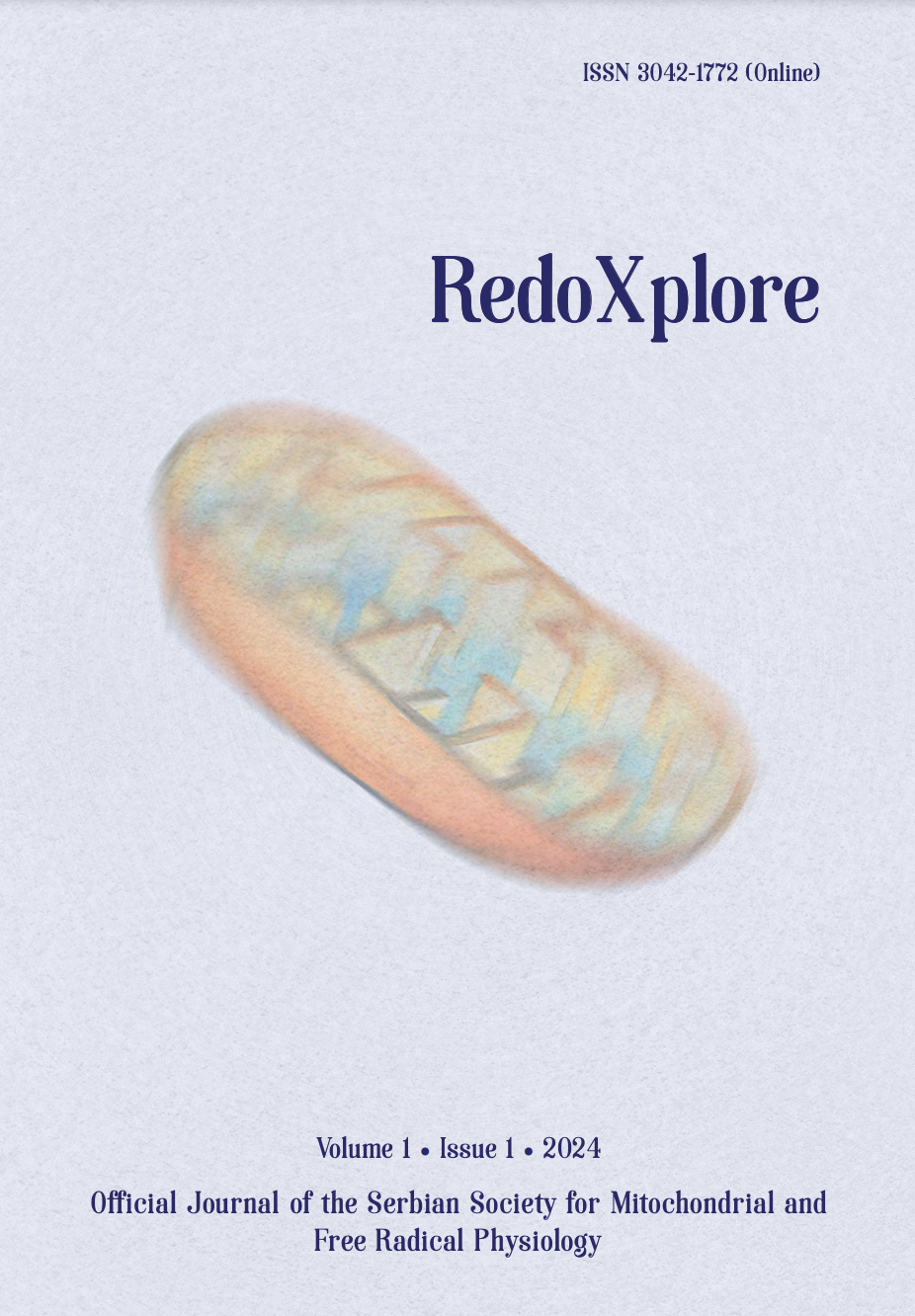
More articles from Volume 1, Issue 1, 2024
REDOX AND METABOLIC REPROGRAMMING OF BREAST CANCER CELLS AND ASSOCIATED ADIPOSE TISSUE - THE CORNERSTONES OF ADAPTIVE TUMOUR BEHAVIOUR
INSULIN MODULATES MITOCHONDRIAL STRUCTURAL AND FUNCTIONAL MOSAICISM IN BROWN ADIPOCYTES
NITRITE MITIGATES OXIDATIVE BURST IN ISCHEMIA/REPERFUSION IN BRAIN SLICES
NITRIC OXIDE, SUPEROXIDE AND PEROXYNITRITE – REDOX REGULATION OF THE CARDIOVASCULAR SYSTEM BY NITRO-OXIDATIVE STRESS AND S-NITROS(YL)ATION
DIETARY NITRATE AS PIVOT ON THE GUT MICROBIOTA-HOST REDOX COMMUNICATION
NUTRIGENOMICS OF VITAMIN E AND FATTY ACID METABOLISM IN LIPOTOXICITY AND OXIDATIVE STRESS-RELATED DISEASES
Department of Pharmaceutical Sciences, Human Nutrition and Nutrigenomics Laboratory, University of Perugia , Perugia , Italy
Editor: Bato Korac
Published: 29.08.2024.
Keynote lectures
Volume 1, Issue 1 (2024)
Abstract
Vitamin E (alpha-tocopherol, VE) is essential to prevent severe neurological symptoms and even death of a genetic form of ataxia associated with vitamin deficiency or AVED. Its essentiality is also proven in secondary deficiencies associated with malnutrition and/or malabsorption syndromes that besides moderate to severe neurological abnormalities can contribute to induce metabolic, musculoskeletal, hematological, and immune dysfunctions, especially in the elderly. VE is the most abundant and ubiquitous fat-soluble nutrient with hydrogen atom donating properties (often described as “antioxidant”) of the plasmalemma; its relative abundance with respect to phospholipid residues is by far the highest among other H donors and its membrane levels influence the flux of lipoperoxyl radicals during both enzymatic and non-enzymatic processes of lipid peroxidation. Consequently, VE directly affects the metabolism and function of membrane fatty acids, also playing a key role in lipid signaling and thus in the indirect control of different enzymes, signal transduction, and transcriptional proteins that connect, under a functional point of view, the VE levels in human tissues with many pathophysiological aspects and deficiency symptoms. Recent evidence strongly supports the participation of the long-chain metabolites of VE in at least some of its “non-antioxidant” properties. Altogether these aspects depict the biological complexity of this vitamin which is far from being comprehensively understood. Last-generation omics technologies make it possible to face such a complexity to represent with unprecedented efficacy both the essentiality aspects and the health-promoting potential of this vitamin in human nutrition studies and clinical trials on deficiency syndromes and other human diseases that may benefit from its biological properties. Transcriptomics and especially metabolomics protocols have been utilized in our laboratories, either separate or in multiomics mode, to develop personalized and precision nutrition (i.e. nutrigenomics) platforms of investigation dedicated to this vitamin, and examples of their potential for innovation in VE research will be given in this presentation, including in vitro studies and clinical trials on hepatic fatty acid metabolism and lipotoxicity, the etiologic factor of non-alcoholic fatty liver disease, and studies in kidney disease patients that develop secondary VE deficiency in the context of severe oxidative stress and lipid peroxidation symptoms.
Citation
Copyright

This work is licensed under a Creative Commons Attribution-NonCommercial-ShareAlike 4.0 International License.
Article metrics
The statements, opinions and data contained in the journal are solely those of the individual authors and contributors and not of the publisher and the editor(s). We stay neutral with regard to jurisdictional claims in published maps and institutional affiliations.






